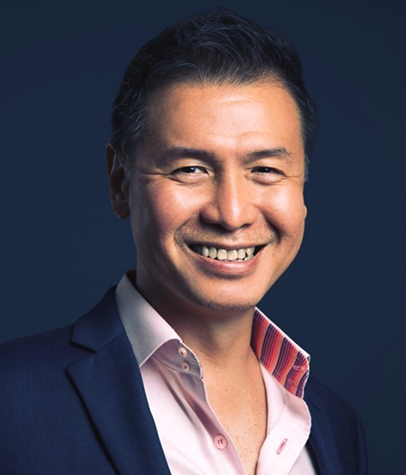AI- and data-driven healthcare can reach every corner of the world, but the key is to democratize the tech even more.
In a world where data has become the lifeblood of innovation and progress, there is one realm where its significance shines brighter than ever: healthcare.
Health data, when harnessed effectively, becomes a powerful ally in the pursuit of better patient outcomes. And it is not just about crunching numbers and creating charts: it is about translating vast volumes of information into meaningful insights that can bring hope to millions, and save lives.
Regardless of whether the data resides on the cloud or an on-premises data center, AI, Generative AI (GenAI), and machine learning are crucial to a successful data-driven health program.
Using AI-powered algorithms, doctors can now detect diseases earlier by analyzing large volumes of patient data, from medical history to laboratory results and imaging scans. Accelerated by the cloud, this early diagnosis capability allows healthcare professionals to intervene promptly and provide personalized treatment plans built using ML, leading to better patient outcomes and more lives saved.
Similar advances in A and ML have been applied to medical imaging, leading to faster and more precise diagnoses, quicker treatments, and improved patient care. And, with AI-based predictive analytics, healthcare providers can forecast patient outcomes based on historical data. Armed with this information, doctors can create more effective treatment plans tailored to each patient’s unique needs, resulting in improved care and better recovery rates.
What are some of the latest data-driven strategies in healthcare?
GenAI and synthetic data
Generative AI offers invaluable assistance to healthcare professionals by enabling them to interpret a patient’s data more effectively, including their medical history, imaging records, genomics, or laboratory results.
With a simple query on a Large Language Model much like ChatGPT, GenAI can rapidly deliver the data that clinicians need, even if it’s stored in various formats and locations — helping healthcare providers quickly gain a better understanding of a patient’s health. This also streamlines the decision-making process and empowers medical experts to provide more efficient and accurate care to their patients.
One of the most significant advances in GenAI is the technology’s ability to produce synthetic data, including medical images. This synthetic data is invaluable as it enhances the training process by expanding the content and data used for research and medical training. By generating diverse and realistic data and images, GenAI also helps develop more effective ML models, benefiting research and healthcare training.

AI and healthcare in Asia
Across Asia, healthcare providers are joining the AI revolution. Here are just a few examples:
- Indonesia, for example, is making significant strides in technological innovation by launching a national AI strategy. The plan aims to create the region’s largest AI ecosystem, driving growth across various sectors, including healthcare. The initiative plans to optimize the entire health service system to become more efficient, with better cloud-based services, including the accelerated adoption of telemedicine.
- Singapore is also using an AI platform to optimize the country’s hospital bed supply. The platform accurately predicts bed availability up to two weeks in advance, enabling more efficient patient admission and discharge planning. By analyzing various data points, including patient admissions, discharges, and historical trends, the AI system can anticipate future bed availability and potential bottlenecks in the hospital. This proactive approach helps hospitals optimize bed utilization, reduce wait times, deploy staff more efficiently, and enhance patient flow and care.
- China’s Baidu search engine has a chatbot specifically designed to aid doctors in responding to patients’ inquiries and recommending potential treatment options, 24/7. It can answer common medical questions, and even offer basic triage services via streaming video.
Worldwide, the demand for caregivers worldwide is intensifying, particularly in the aftermath of the COVID-19 pandemic. To address this issue, there is growing interest in the potential of humanoid robots, which could potentially alleviate the staffing crisis in the future.
In remote or underserved areas of the world, AI is also making remote patient monitoring a reality, via wearable devices equipped with smart algorithms connected to the cloud using IoT technology. These smart devices track vital signs, detect anomalies, and alert medical professionals in real-time, ensuring timely interventions and reducing the risk of complications.
Healthcare security and privacy
Medical data is, like financial data, extremely precious and must be secured at all costs. This means AI implementations must adhere to strict ethical standards to earn and maintain public trust.
A crucial aspect of Asia’s healthcare’s technological advancement is data governance and security. Fortunately healthcare providers in the region are prioritizing patient confidence through robust data governance strategies that meet ever-evolving security requirements imposed by regulating agencies, governments, industries, and the general public.
Amid all the wonders of data-driven, intelligent healthcare, one constant remains: the human touch. Behind every data point and predictive model, compassionate healthcare providers embrace data not as a replacement for their intuition and empathy but as a complement to their healing instincts. AI solutions will need to be continually democratize to helping these healthcare heroes realize their objectives.

